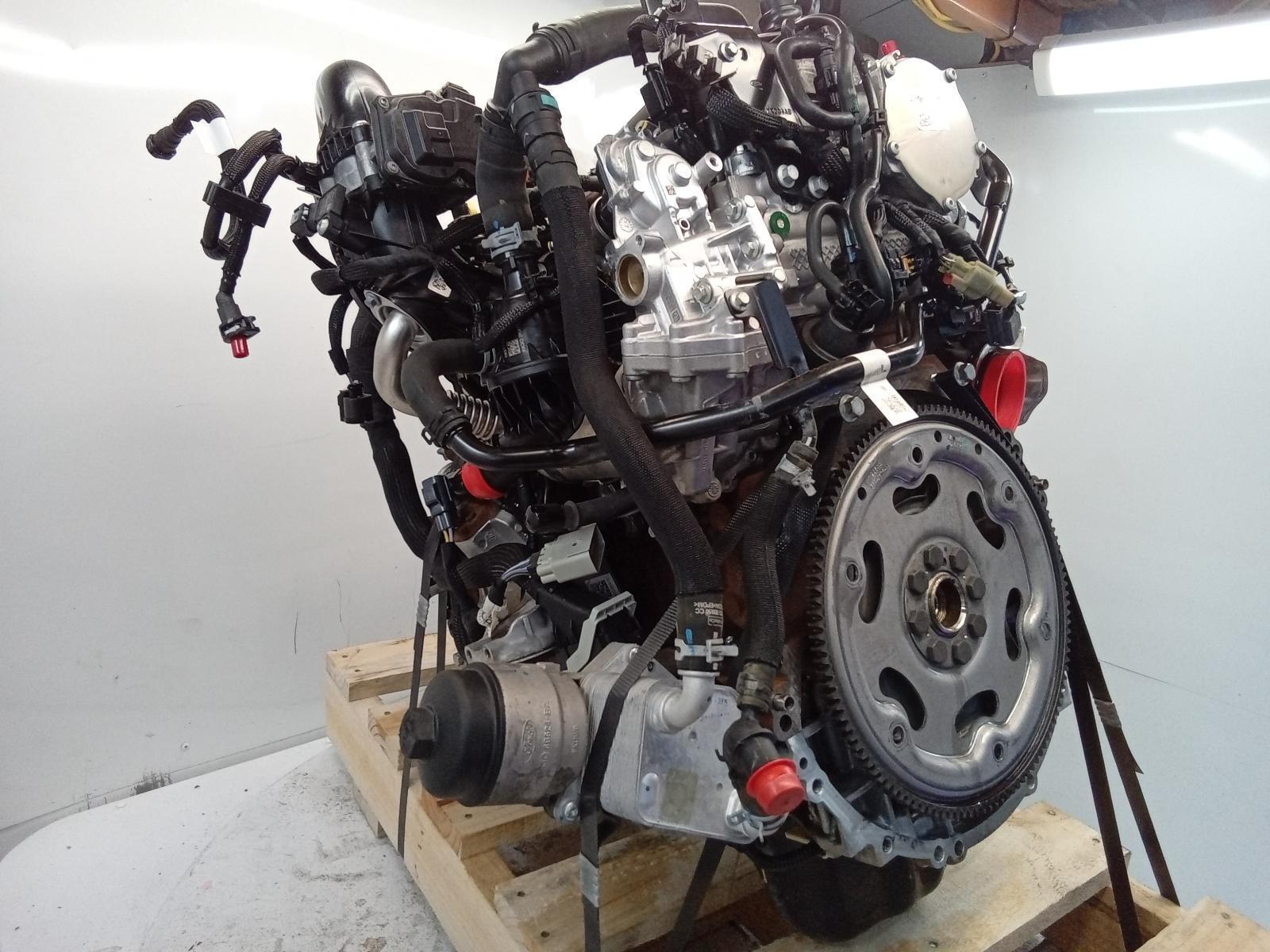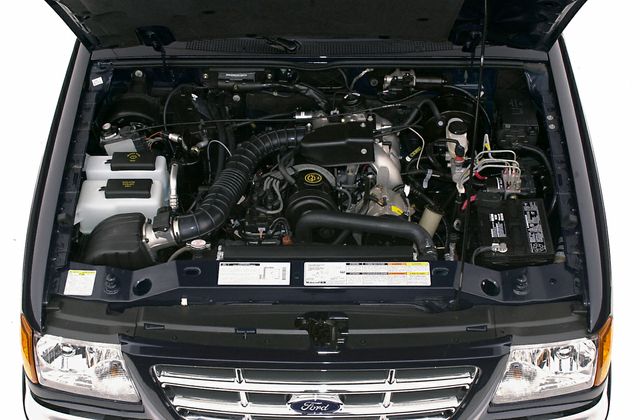How the 2.2 Ford Ranger Engine Stands Out for Durability and Power in Tough Conditions
How the 2.2 Ford Ranger Engine Stands Out for Durability and Power in Tough Conditions
Blog Article
Understanding the Basics of Automobile Engines: Kinds, attributes, and features

Summary of Vehicle Engines
A vehicle engine functions as the heart of a car, converting gas into mechanical power to push it onward. This elaborate system consists of different components that operate in unison to make certain ideal efficiency and efficiency. The essential procedure of an auto engine includes the interior burning process, where gas and air are blended, ignited, and eliminated to produce power.
The engine's design can substantially impact its performance, gas efficiency, and emissions. Trick components consist of the cylinder block, pistons, crankshaft, and camshaft, each playing a vital duty in the engine's general function. The cylinder block houses the cylinders where combustion happens, while the pistons transform the eruptive energy from combustion right into straight activity. This motion is then transformed into rotational energy by the crankshaft, allowing the automobile's wheels to transform.
In addition to these components, engines frequently use various systems such as gas injection, ignition, and cooling down systems to improve performance and durability. Comprehending the fundamental auto mechanics of cars and truck engines is crucial for doing and identifying issues maintenance, ultimately adding to the lorry's integrity and effectiveness in time.

Sorts Of Cars And Truck Engines
Auto engines can be classified into several kinds based upon their design, gas kind, and operational principles. 2.2 ford ranger engine. One of the most typical categories consist of internal combustion engines (ICE), electrical engines, and hybrid engines
Internal burning engines, which can be additional divided right into gas and diesel motor, run by stiring up a fuel-air combination to create power. Gasoline engines are generally lighter and smoother, while diesel motor are much more fuel-efficient and offer better torque.
Electric engines use electric power stored in batteries to power an electrical motor, offering instantaneous torque and no emissions throughout operation. As modern technology breakthroughs, electric vehicles (EVs) are significantly ending up being popular for their ecological benefits and reduced running costs.
Crossbreed engines integrate elements of both internal burning and electric engines, enabling for adaptable source of power and boosted fuel effectiveness. They can run in different settings, using either the fuel engine, the electric motor, or both simultaneously.
Each kind of engine has distinctive advantages and disadvantages, influencing their application in various vehicle types and market sectors, from portable autos to heavy-duty trucks. Recognizing these kinds is vital for making informed choices pertaining to car choice and performance assumptions.
Engine Features Explained
Comprehending engine features is essential for comprehending just how automobiles run efficiently. At the core of any interior burning engine exists the basic procedure of converting fuel into mechanical power. This procedure starts with the intake stroke, where air and fuel are drawn into the combustion chamber. Following this, the compression stroke compresses the air-fuel combination, increasing its temperature and pressure.
The ignition happens following, sparking the blend and useful content developing a rapid expansion of gases. This force drives the piston down during the power stroke, which ultimately translates right into the rotational activity of the crankshaft. The exhaust stroke after that eliminates the invested gases from the chamber, giving way for a brand-new cycle to start.
In enhancement to these main functions, engines likewise include systems that handle cooling and lubrication, guaranteeing optimal functional temperature levels and reducing rubbing between moving parts. This elaborate interaction of features allows the engine to create the power necessary for lorry propulsion while preserving effectiveness and reliability. Understanding these functions offers useful insight into the intricacies of automobile design and improves the ability to detect and resolve engine-related concerns successfully.
Key Engine Attributes
Engine style encompasses a number of key attributes that significantly affect toughness, performance, and effectiveness. One of one of the most critical elements is the engine arrangement, that includes inline, V-type, and level layouts. Each configuration affects the engine's power, balance, and dimension output, therefore impacting total vehicle dynamics.
An additional important function is the engine variation, describing the total volume of all cylinders. Larger displacements normally produce even more power but may jeopardize gas performance. Engine products additionally play a pivotal role; lightweight and high-strength materials, such as light weight aluminum and magnesium alloys, boost efficiency without including too much weight.
The kind of gas injection system employed-- such as multi-port or direct shot-- influences combustion efficiency and emissions. Turbocharging and turbo charging are attributes that enhance engine efficiency forcibly additional air into the combustion chamber, enhancing power output without substantially raising engine dimension.
Last but not least, the visibility of sophisticated engine monitoring systems maximizes fuel-air combination and ignition timing, adding to smoother procedure and much better gas economic situation. Jointly, these attributes define an engine's capabilities, establishing the foundation for its performance and durability in an affordable why not try this out automobile landscape.
Maintenance Tips for Engines
Correct engine upkeep is essential for making certain ideal efficiency and long life, as neglecting regular treatment can bring about substantial problems down the line. To maintain your engine effectively, begin with routine oil adjustments, commonly every 3,000 to 7,500 miles, relying on the sort of oil made use of. Fresh oil lubricates engine components, lowering friction and wear.
Additionally, checking coolant degrees is important to stop getting too hot. Guarantee that the coolant is covered up and is in good problem to maintain reliable temperature regulation. Routinely change and examine air and gas filters, as blocked filters can prevent air flow and gas delivery, endangering engine efficiency.
Moreover, take notice of ignition system and ignition systems. Damaged or used ignition system can cause misfiring and reduced efficiency. Checking the battery terminals and connections for deterioration is also essential, as a weak battery can impact engine beginning.

Final Thought
In summary, a thorough understanding of vehicle engines includes different types, features, and crucial attributes that dramatically affect lorry efficiency. Inner burning engines, together with hybrid and electrical choices, show varied devices for power conversion. 2.2 ford ranger engine. Acknowledging the necessary site here features, such as intake and exhaust cycles, alongside crucial engine functions like setup and fuel injection systems, outfits car owners with the knowledge necessary for reliable upkeep and operation, ultimately boosting lorry durability and effectiveness
A cars and truck engine offers as the heart of a car, converting gas right into mechanical energy to drive it onward. The essential operation of a car engine entails the interior combustion procedure, in which fuel and air are combined, fired up, and expelled to develop power.
Consistently change and evaluate air and gas filters, as clogged filters can prevent air flow and gas shipment, compromising engine performance. - 2.2 ford ranger engine
In summary, a thorough understanding of cars and truck engines includes various kinds, functions, and crucial features that substantially influence automobile performance. Identifying the vital functions, such as intake and exhaust cycles, along with vital engine attributes like setup and gas injection systems, furnishes vehicle proprietors with the knowledge needed for effective maintenance and operation, eventually boosting car durability and efficiency.
Report this page